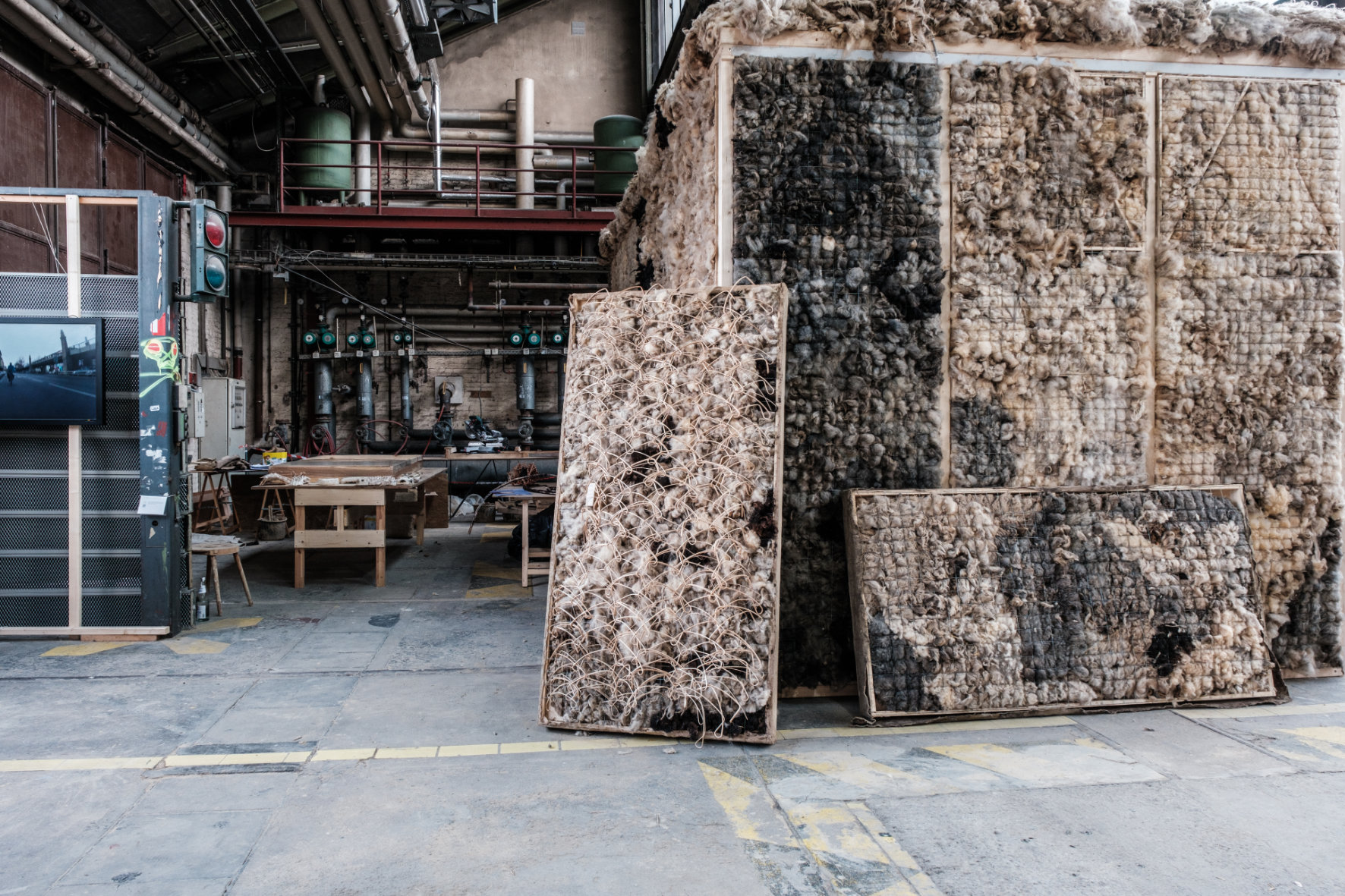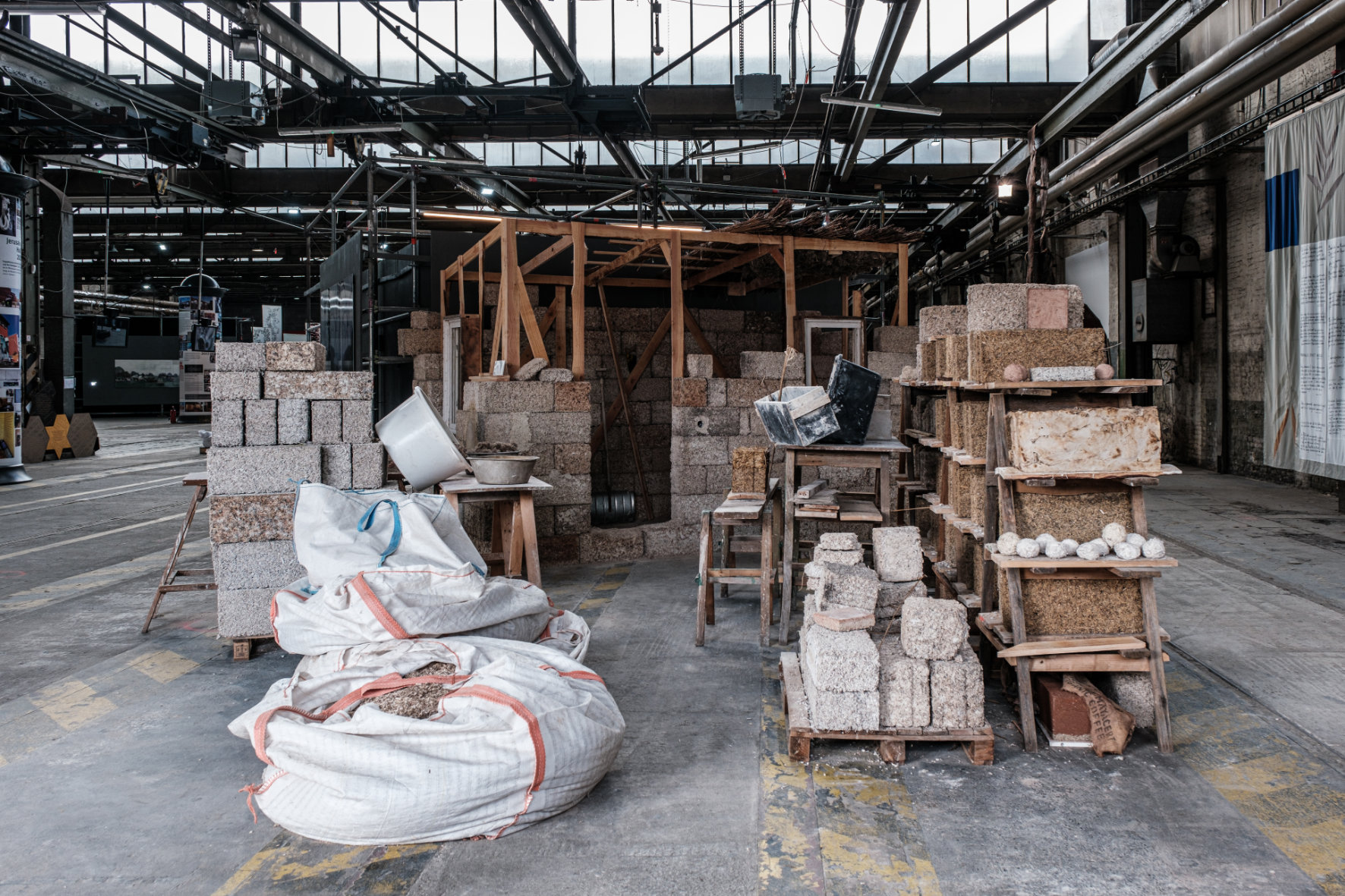Sun. 16.07.2023 | 12-24 Uhr
Foundation for the Fund Aesthetics and Sustainability – FAeS
The proceeds from the sale of works from the exhibition, which were made available by the artists for this purpose, will serve as a symbolic foundation for a first pilot project of the FAeS. Almost half of the exhibited works can be purchased on July 16, 2023 on the evening of the finissage.
Until July 16, 2023, the international traveling exhibition EXAMPLES TO FOLLOW FAeS! can be seen at the Uferhallen in Berlin-Wedding. Since 2010, when the exhibition began in Berlin, it has traveled internationally, been changed, expanded and updated. Currently, it shows 82 of a total of 139 artistic positions on major ecological issues of our time – in the interaction of art, science and invention. For thirteen years, artists from all over the world have contributed to the debate on aesthetics and sustainability with their works in the exhibition, accompanied by impulses from science. This future-oriented and insightful cooperation is to be consolidated through the establishment of a new funding instrument, the FAeSFund Aesthetics and Sustainability (FÄN). It is high time to act.
The interweaving of scientific and artistic research was the motivation for curator Adrienne Goehler to develop the concept of the Aesthetics and Sustainability Fund. The fundamental factor here was the realization that the current funding instruments do not allow for cross-disciplinary research and thus massively limit the innovative impact of the arts. Goehler conceived the exhibition EXAMPLES TO FOLLOW! to provide insight into how liquefaction and interweaving of disciplines enable sensory cognition. In the meantime, 195 protagonists from art and science are calling for such a transdisciplinary funding instrument.
On June 6, as part of the exhibition in Berlin, director and conceptual designer Anne Schneider, lawyer and visual artist Dr. Christine Fuchs, president of the Kulturpolitische Gesellschaft Dr. Tobias Knoblich, and scientist and artist Prof. Dr.-Ing. Vera Meyer discussed the necessity and feasibility of a FAeS.
Vera Meyer used her own research work to illustrate how the innovative power of her art was able to unfold when she combined it with her research on fungal metabolic potentials and gained completely new insights into it. She has headed the Chair of Molecular and Applied Microbiology at TU Berlin since 2011. Meanwhile, her inter- and transdisciplinary research projects combine natural and engineering sciences with art, design and architecture and create biobased scenarios for possible living and housing worlds of the future. She emphasized that, due to the complexity of current events, it is above all important to move from an “I” to a “we.” Because no one can understand this world alone anymore, she said, it is important to bring together as many people as possible with different perspectives. Complex theoretical relationships must be made tangible and thus understandable. “The challenges we face can only be penetrated through art,” says Vera Meyer.
Building on her dissertation entitled “Avantgarde und Erweiterter Kunstbegriff – Eine Aktualisierung des Kunst- und Werkbegriffs im Verfassungs- und Urheberecht” (Avant-garde and Extended Concept of Art – An Update of the Concept of Art and Works in Constitutional and Copyright Law), Dr. Christine Fuchs described a very strict to limited interpretation of artistic freedom and purpose in Germany. Due to the historically experienced appropriation and regimentation of the arts, potential effects of art are often interpreted here as a threat to artistic freedom. She pleads for an expansion of artistic freedom in order to be able to take up such impulses and bring them together with other areas, so that art can become reality.
Dr. Tobias Knoblich emphasized that it is the task of cultural policy to create the basis for this potential to unfold by providing resources in addition to existing instruments. Artists, whose work is characterized by horizontal connections between disciplines, should thus be enabled to act accordingly. He emphasized that from a cultural policy perspective there were no conclusive arguments against a FÄN. The immense potential of aesthetics as a moment of sensual cognition must be increasingly focused on, he said. This is where the Kulturpolitische Gesellschaft could come in.
In order to overcome existing barriers of responsibility, voices were raised in favor of so-called linkers who would intensify the exchange between business, science, civil society and art. Ideally, the structure and funding of the Fund for Aesthetics and Sustainability would already reflect the plurality that is to be made possible by it. Ideally, funds for the FÄN should not come from the culture department alone, but proportionately from the environment, culture, science and research departments.
As a first pilot project of the FAeS, prototypes for houses made of renewable raw materials are to be developed – as well as workshops designed to guide self-building in Ukraine and the earthquake regions in Syria and Turkey. In June, new connections between ecological building materials such as sheep’s wool, mushroom mycelium, hemp, clay and bark have already been explored and further developed in workshops between artists and scientists. Unimagined potentials are opening up for a sustainable construction industry – not least in reconstruction in war and disaster areas. The conventional construction industry accounts for 40 percent of the climate disaster; without a transformation of this sector through circular economy and renewable building materials, a sustainable future will not be possible.
At www.https://www.fonds-aesthetik-und-nachhaltigkeit.de/english-version-faes/ you will find detailed thoughts and 195 pleas from supporters from art, science and the in-between.
Further Information
www.z-n-e.info
www.fonds-aesthetik-und-nachhaltigkeit.de
Pressekontakt
Denhart v. Harling, segeband.pr, dh@segeband.de, +49 179 4963497




